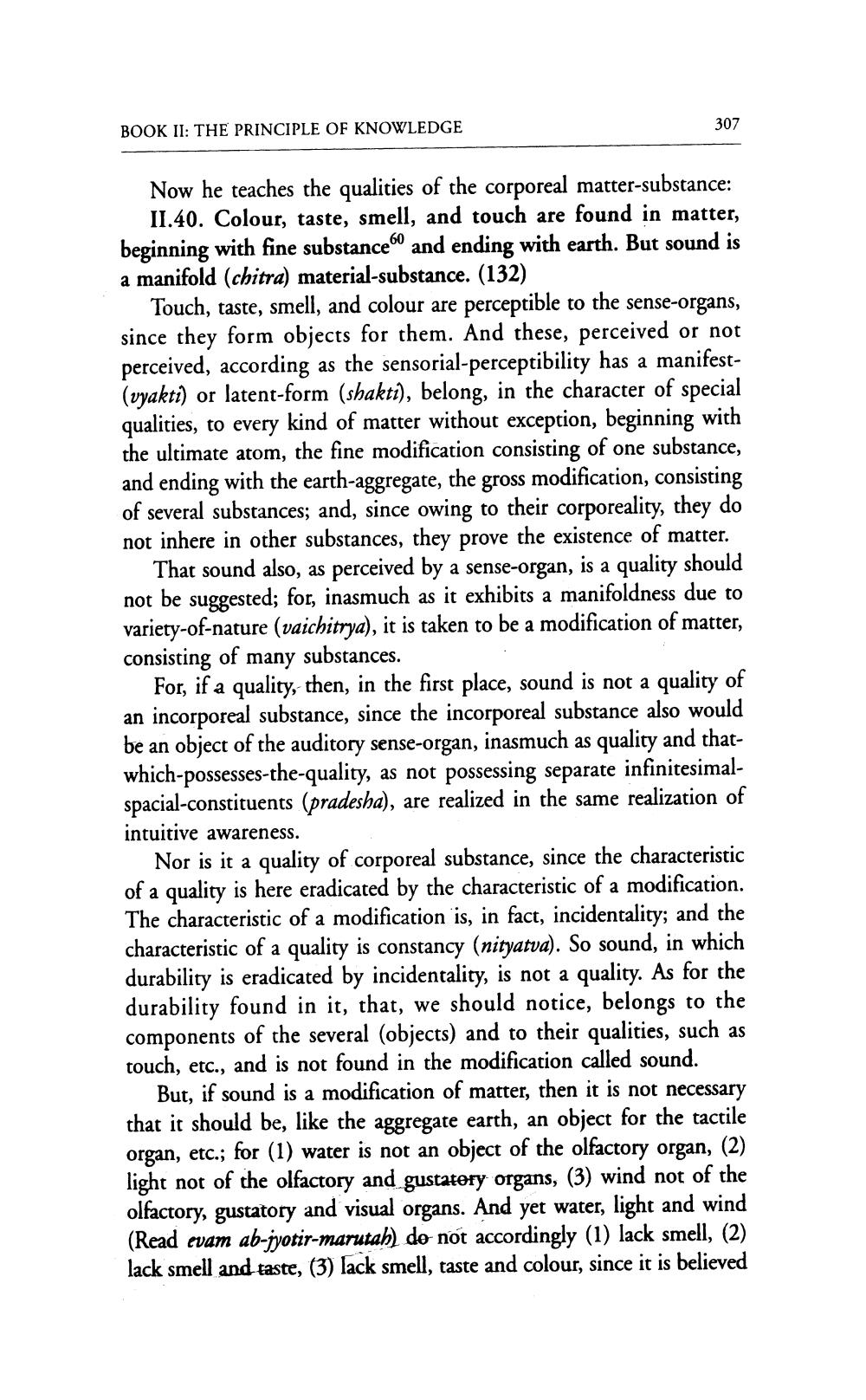________________
BOOK II: THE PRINCIPLE OF KNOWLEDGE
307
Now he teaches the qualities of the corporeal matter-substance:
II.40. Colour, taste, smell, and touch are found in matter, beginning with fine substance and ending with earth. But sound is a manifold (chitra) material-substance. (132)
Touch, taste, smell, and colour are perceptible to the sense-organs, since they form objects for them. And these, perceived or not perceived, according as the sensorial-perceptibility has a manifest(vyakti) or latent-form (shakti), belong, in the character of special qualities, to every kind of matter without exception, beginning with the ultimate atom, the fine modification consisting of one substance, and ending with the earth-aggregate, the gross modification, consisting of several substances; and, since owing to their corporeality, they do not inhere in other substances, they prove the existence of matter.
That sound also, as perceived by a sense-organ, is a quality should not be suggested; for, inasmuch as it exhibits a manifoldness due to variety-of-nature (vaichitrya), it is taken to be a modification of matter, consisting of many substances.
For, if a quality, then, in the first place, sound is not a quality of an incorporeal substance, since the incorporeal substance also would be an object of the auditory sense-organ, inasmuch as quality and thatwhich-possesses-the-quality, as not possessing separate infinitesimalspacial-constituents (pradesha), are realized in the same realization of intuitive awareness.
Nor is it a quality of corporeal substance, since the characteristic of a quality is here eradicated by the characteristic of a modification. The characteristic of a modification is, in fact, incidentality; and the characteristic of a quality is constancy (nityatva). So sound, in which durability is eradicated by incidentality, is not a quality. As for the durability found in it, that, we should notice, belongs to the components of the several (objects) and to their qualities, such as touch, etc., and is not found in the modification called sound.
But, if sound is a modification of matter, then it is not necessary that it should be, like the aggregate earth, an object for the tactile organ, etc.; for (1) water is not an object of the olfactory organ, (2) light not of the olfactory and gustatory organs, (3) wind not of the olfactory, gustatory and visual organs. And yet water, light and wind (Read evam ab-jyotir-marutah) do not accordingly (1) lack smell, (2) lack smell and taste, (3) lack smell, taste and colour, since it is believed




